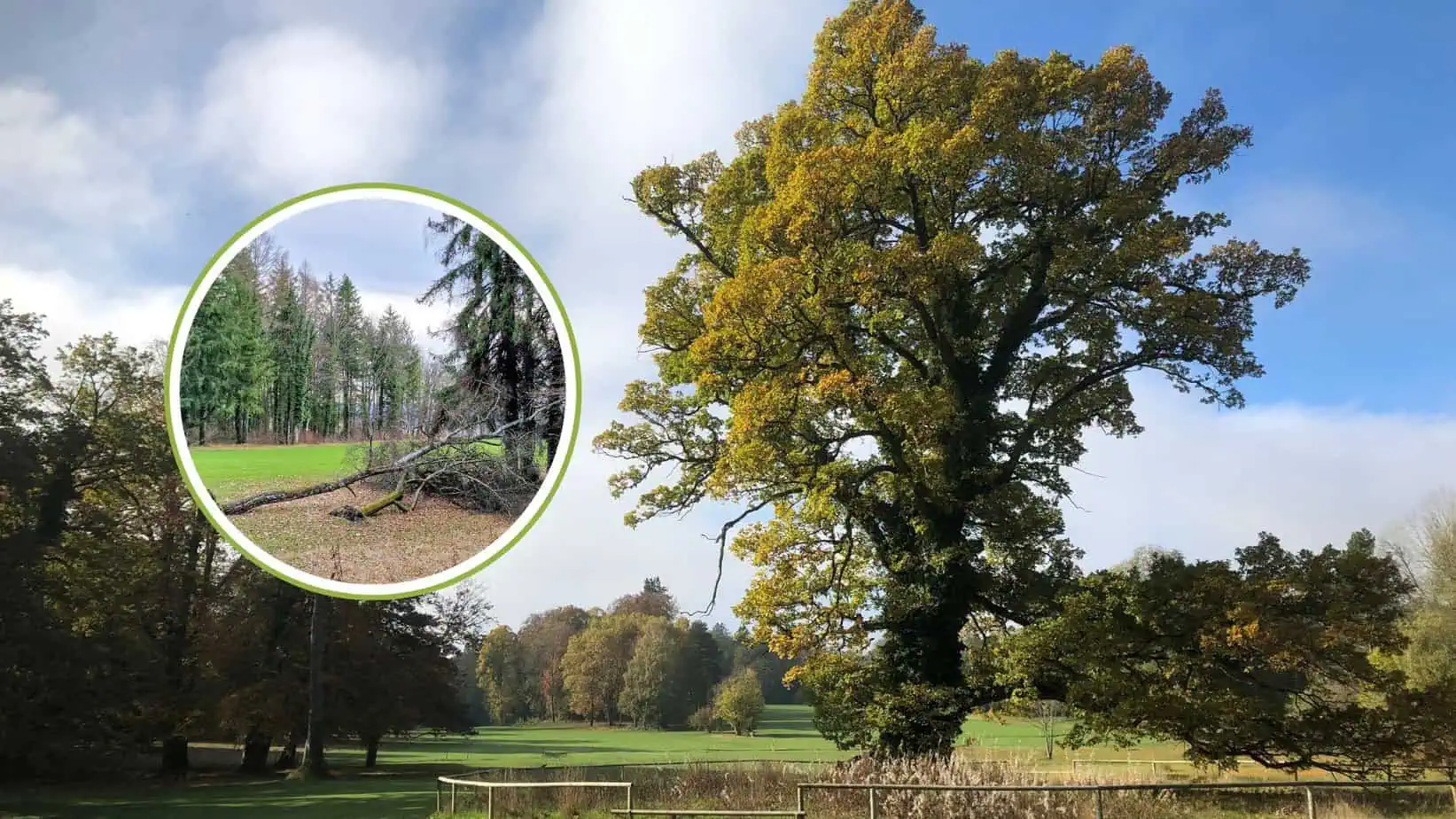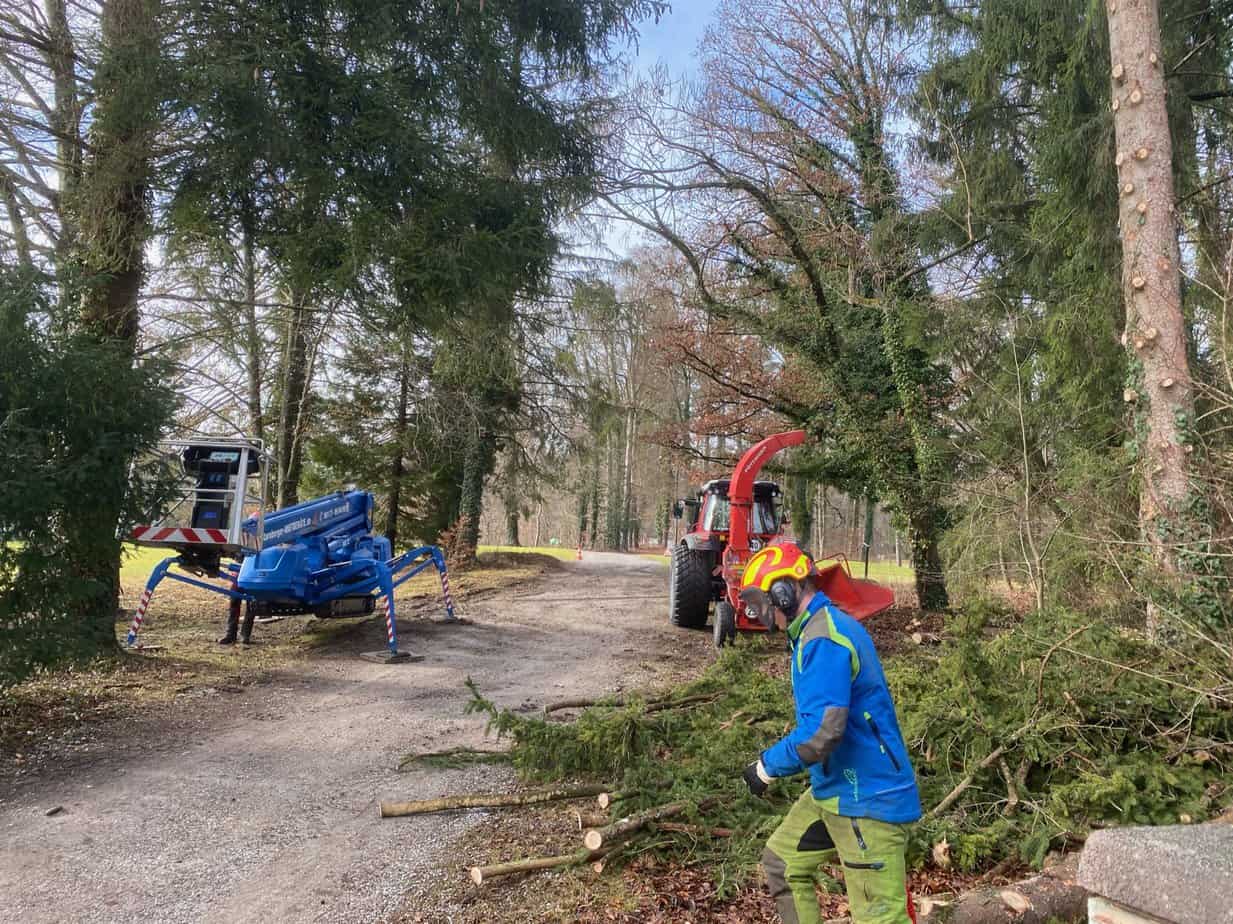GC Feldafing: Historic parks suffer from climate change
How does climate change affect the trees in historic parks? Damage to trees and shrubs is increasing. This also applies to golf courses that are located in parks. The safety of players can only be guaranteed, the ecosystem protected and the fairways kept in good condition with increased care of the trees.
Data from researchers at TU Berlin sounds alarming. The study funded by the Deutsche Bundesstiftung Umwelt (DBU) entitled “Park damage report model project. A study funded by the German Federal Environmental Foundation (DBU) entitled “Model project park damage report. Condition survey of damage to trees in historic parks in Germany as a result of climate change” reveals massive damage to trees in Germany’s historic parks and gardens as one of its key findings. These include the Lennépark on Lake Starnberg, part of whose grounds are home to the fairways of the GC Feldafing. As a result of the extreme weather phenomena in 2017, 2018 and 2019, data sets from 62 parks in eleven federal states were analyzed.
59 percent of trees affected
According to the study, the condition of the trees and shrubs in the parks is not good after the hot years from 2018 to 2020. “We have clearly noticed a deterioration in the situation with the trees in recent years. However, the effects were also individual. This again shows that climate change must be taken seriously, but that we should be careful not to generalize and expect the same problems everywhere,” study director Norbert Kühn is quoted as saying in the latest press release.
The climatic water balances examined (precipitation minus evaporation) are particularly worrying in some regions. Baden-Baden, the park at Schloss Dyck and Moritzburg (Saxony) suffered the greatest losses. With regard to the vitality of the approximately 157,00 trees examined, it was also found that in 2022, 59 percent of the historic parks were affected by heat or drought. Plant health declined in all plants during the period from 2017 to 2020.
Tree damage on the increase
Some of the parks examined, such as the English Garden in Munich or the Lennépark on Lake Starnberg, performed relatively well. However, the challenges of maintaining the condition of the parking areas are also very great here. The people in charge of the Golfclub Feldafing, who are responsible for maintaining the Lennépark, can tell you a thing or two about this. The golf course is located in the middle of the park, which was once commissioned by the Bavarian King Maximilian II in 1853. “This is generally a huge issue,” explains Florian Kohlhuber, Managing Director of Golfclub Feldafing. “You have to constantly rework.”
The idyllic 18-hole course in the small community in the foothills of the Bavarian Alps has seen an increase in storm damage and storms in recent years. Dead trees, snapped branches or branches that have fallen to the ground are not uncommon in the park area. The Lennépark has also had to contend with ash dieback and 80 infected trees had to be felled as a result.
Immense expense for golf clubs
However, the local woody plants are not only struggling exclusively with the effects of climate change. The high biological age of the trees of over 150 years is a challenge in itself. The castle park on Lake Starnberg was designed in the 19th century, and the golf club with an almost 300-year-old oak tree as a natural landmark on fairway 13 will be celebrating its 100th anniversary in two years’ time.
Tree crown shortening and pruning of trees that are part of the golf course are on the agenda in Feldafing, as well as securing and, after consultation with the relevant authorities, felling trees that have to be removed due to diseases in old trees. There is talk of an average of 500 tree works per year. In terms of playing technique, this means that some of the fairways need to be reworked. And road safety had to be guaranteed not only on the golf course, but also in the public park area, some of which is directly adjacent to the golf course.
As part of the lease agreement with the park owner, the Bavarian Administration of State Palaces, Gardens and Lakes, the golf club is obliged to keep around 80 hectares of parkland in good condition. This represents an immense challenge for the facility on the western shore of Lake Starnberg. Before the club’s lease agreement with the Bavarian Palace Administration was extended last year, Kohlhuber calculated that his company was spending around 200,000 euros a year on park maintenance for around 10,500 individual trees, over 100 woodlands and numerous public paths and streams. “The need for care is immense.”
Trees always in view
The golf club uses the off-season in particular to carry out its tree maintenance duties and therefore employs its staff, including tree climbers, throughout the calendar year. “Winter time is tree time,” says Kohlhuber. Another expensive aspect is insurance for tree damage. Compared to other golf courses, Feldafing is well protected and still covered by one provider. However, with a high deductible per claim with a sum in the mid five-figure range.
If, as in the case of Feldafing, you are not working with a park administration (which may offer a concept for sustainable tree management such as that provided by the Bavarian Palace Administration for information) and therefore have no direct contacts, there are further opportunities for cooperation with external experts. In addition to authorities, these can be tree experts with whom Feldafing has already worked. In Kohlhuber’s experience, the development and condition of the tree population should never be left to its own devices and should be continuously monitored and documented. “If you don’t pay constant attention to this, you can get into trouble,” says the managing director, referring to liability issues and road safety obligations that a golf club must comply with.









 Husqvarna
Husqvarna